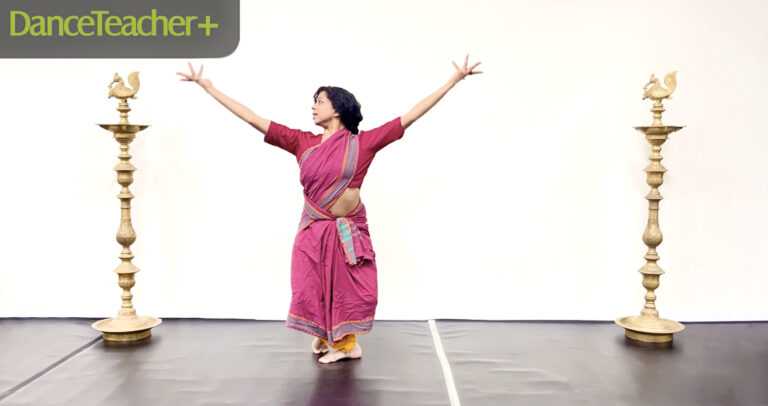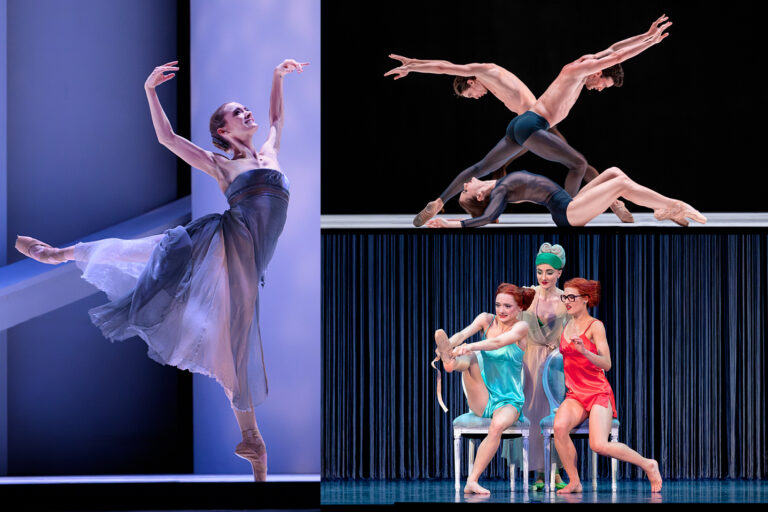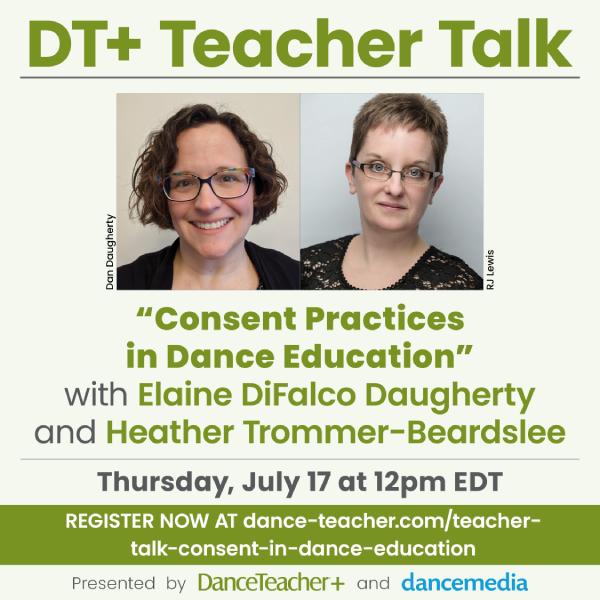H’Doubler with her ever-present sidekick, a human skeleton
Though Margaret H’Doubler was not a dancer—she took only a handful of classes in her lifetime—she is considered the founder of dance in American higher education. At a time when dance was considered an inappropriate, sexually promiscuous activity for women, she offered her students the chance to explore their physical and creative sides.
Born in Kansas, H’Doubler graduated with a degree in biology from the University of Wisconsin–Madison in 1910. After teaching physical education at her alma mater for six years, she spent a year in New York. Blanche Trilling, UW’s PE chair, requested that she poke around the city and find some dance “worth a college woman’s time.”
Although H’Doubler was initially turned off by what she saw—particularly the stiff, imitative and possibly physically damaging dance that often passed for studio ballet training at the time—she was drawn to Alys Bentley’s creative movement classes for children in NYC.
She was able to apply Bentley’s creative problem-solving approach when she returned to UW a year later and taught her first dance class as part of a summer session.
Initially, her classes were for women only. They began with students lying on the floor—a scandalous practice in 1917—to feel the pull of gravity. H’Doubler encouraged exploration and self-discovery. For example, students might slowly roll from their backs to their stomachs, to study the motion and sequence of each part of the body as it twists.
Over the next decade, she crafted the curriculum for an interdisciplinary dance major—the first in the U.S.—within UW’s physical education department. In 1926, the program began accepting students. For the next 25-plus years, H’Doubler carefully honed the program. The goal was to create teachers; she was less concerned with training performers.
By the time she retired in 1954, H’Doubler had effectively franchised dance education: Many of her students went on to head dance programs in other colleges and private and public schools. Ten years before her death at 93, she received an honorary doctorate from UW. DT
Classroom Style
H’Doubler’s classes were notable for their unconventional start—on the floor, free from worry about balancing—and problem-solving approach, rather than a focus on technique. H’Doubler, who was not a dancer, rarely demonstrated for her students. Instead, she relied on a human skeleton (it became her trademark) to illustrate the body’s anatomy and physical ability.
Fun Facts
- Soon after establishing dance classes at the University of Wisconsin–Madison, H’Doubler organized a weekly workshop for students to study dance outside of university coursework. She named the group Orchesis, from the Greek word for the universal nature of movement. Men weren’t allowed to join the dance club until 1933.
- The University of Wisconsin–Madison dedicated its Lathrop Hall to the burgeoning dance program. In 1998, the university renamed the remodeled space Margaret H’Doubler Performance Space.
Two of H’Doubler’s students, circa 1920
The Legacy Lives On
Many of H’Doubler’s students followed in her footsteps, founding dance programs of their own. Some of her more famous pupils include Mary Hinkson, who became a leading dancer with the Martha Graham Dance Company; Anna Halprin, the postmodern dance pioneer who founded the San Francisco Dancers’ Workshop; and, for a brief period, Martha Hill, who later directed Juilliard’s dance program. H’Doubler’s book, Dance: A Creative Art Experience, was used widely in U.S. dance education during the latter half of the 20th century.
Resources
Print:
“Margaret Newell H’Doubler: Founder of the nation’s first college dance program,” by Janice Ross, Dance Teacher, December 2005
“The Non-Dancing Mother of Dance Education,” by Janice Ross, Dance Teacher, October 2000
Web:
Dance Heritage Coalition: “America’s Irreplaceable Dance Treasures”: danceheritage.org
UW-Madison Libraries, Archives and Oral History: “Margaret H’Doubler and the Wisconsin Dance Idea”: archives.library.wisc.edu/uw-archives/exhibits/athletics/athletics16dance.html
Photos courtesy of University of Wisconsin–Madison archives





